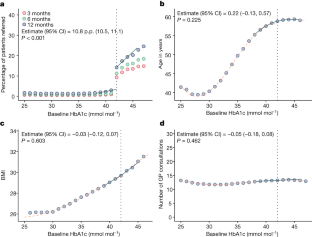2023-11-17 マサチューセッツ工科大学(MIT)
◆10人のボランティアを対象とした研究では、このカプセルが重要なサインをモニターし、睡眠時無呼吸エピソードを検出できることが示されました。研究者たちは、この技術がより侵襲的でない方法で睡眠時無呼吸を診断し、治療の効果を監視するために使用される可能性があると考えています。
<関連情報>
- https://news.mit.edu/2023/ingestible-electronic-device-detects-breathing-depression-patients-1117
- https://www.cell.com/device/fulltext/S2666-9986(23)00184-9
- https://journals.plos.org/plosone/article?id=10.1371/journal.pone.0141666
摂取可能なバイタルモニター錠剤の初のヒト試験 First-in-human trial of an ingestible vitals-monitoring pill
Giovanni Traverso,Victor Finomore Jr.,James Mahoney III,Justin Kupec,Robert Stansbury,Daniel Bacher,Benjamin Pless,Shannon Schuetz,Alison Hayward,Robert Langer,Ali Rezai
Device Published:November 17, 2023
DOI:https://doi.org/10.1016/j.device.2023.100125
Highlights
•Development of vitals-monitoring pill for monitoring respiratory and heart rate
•First time RR and HR have been monitored from the human stomach with a free-floating capsule
•Data achieved high concordance with standard sleep study metrics
•Captured apneic events that are physiologically similar to OIRD
The bigger picture
Body-worn sensors, from implantable devices to wrist-worn fitness monitors, have been in use for many decades. Implantable devices such as automatic defibrillators and pacemakers have been favored for life support applications because externally worn devices may be taken off or otherwise suffer from lack of compliance. However, implantable devices are limited in availability because of cost and the invasiveness of the implantation procedure. Ingestible devices have the potential to provide an accessible alternative to implantable devices by providing high compliance with much lower invasiveness and cost. In this work, we report on the first human experience with an ingestible ballistic monitor that can measure respiration and cardiac activity. We have shown that the ingestible sensor has the potential to replace intrusive, externally worn sensors for sleep studies and that it could serve as the basis for a life-saving autonomous device to rescue people from accidental opioid overdose.
Summary
Ingestible electronics can transform how patients are diagnosed and treated across many conditions. We developed an ingestible vitals-monitoring pill (VM pill) capable of monitoring vital signs including respiratory rate and heart rate. VM pill performance was evaluated in a swine model of opiate overdose and in a human trial of patients in a sleep laboratory. Sleep studies involve admission to a facility, placement of multiple skin sensors, and overnight observation. We hypothesized that the VM pill could diagnose clinically significant changes in respiratory status, such as apnea, unobtrusively. The VM pill was evaluated in 10 human subjects with no adverse events. The data streams captured by the VM pill achieved high concordance with standard sleep study metrics. Ingestible vital sign monitors can transform the diagnosis of sleep-related respiratory disorders and can capture life-threatening events such as apnea or opioid overdose.
Graphical abstract

消化管を介した生理状態モニタリング Physiologic Status Monitoring via the Gastrointestinal Tract
G. Traverso ,G. Ciccarelli ,S. Schwartz,T. Hughes,T. Boettcher,R. Barman,R. Langer ,A. Swiston
PLOS One Published: November 18, 2015
DOI:https://doi.org/10.1371/journal.pone.0141666
Abstract
Reliable, real-time heart and respiratory rates are key vital signs used in evaluating the physiological status in many clinical and non-clinical settings. Measuring these vital signs generally requires superficial attachment of physically or logistically obtrusive sensors to subjects that may result in skin irritation or adversely influence subject performance. Given the broad acceptance of ingestible electronics, we developed an approach that enables vital sign monitoring internally from the gastrointestinal tract. Here we report initial proof-of-concept large animal (porcine) experiments and a robust processing algorithm that demonstrates the feasibility of this approach. Implementing vital sign monitoring as a stand-alone technology or in conjunction with other ingestible devices has the capacity to significantly aid telemedicine, optimize performance monitoring of athletes, military service members, and first-responders, as well as provide a facile method for rapid clinical evaluation and triage.


